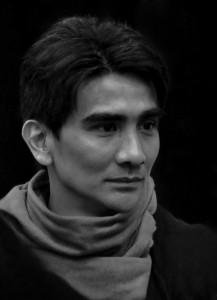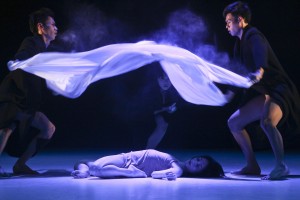Today we have 10 Questions With… choreographer Bulareyaung Pagarlava…

1. How did you become involved in dance?
When I was 12, I saw a performance by Cloud Gate Dance Theatre of Taiwan, though I didn’t know it was Cloud Gate until some years later. It was so inspiring that I made up my mind to become a dancer.
2. What are you currently doing in dance?
Mainly choreographing.
3. Can you explain your approach to choreography?
I don’t create work for the sake of creation. I am not a movement-oriented choreographer interested in analyzing physical moment.
All my choreography reflects my thoughts and emotion. Choreography is a medium of expression. It is my way of connecting to the world.
4. What role does the music play in your choreography?
In my work, music plays a vital role. It offers a room for imagination. In my earlier works, choreography began after I found my music. So the works were often built upon the structure of the music.
In recent years, new choreographic ideas come first, followed by the body moments, then I match them with music. When music comes into place, it’s like there’s a spark.
For the audience who does not enjoy my choreography, they can at least enjoy good music with their eyes closed.
5. Do you have other choreographers that you admire? If so, who and why?
After I started choreographing, I realized what a difficult job it really is. So I appreciate every performance I see. There are many choreographers whom I admire, such as Lin Hwai-min from Taiwan, Pina Bausch and Jiří Kylián from Europe and (the late) Martha Graham from the US.
Martha Graham was more than a choreographer, she’s a legend. Her works are no less astonishing even when we see them in 2012. Extremely solid structure, clear and complex; plus a very descriptive plot; every character on stage stands out. As for many works today, dancers are often overshadowed by the choreography itself.
 6. What are the challenges you face when choreographing a piece?
6. What are the challenges you face when choreographing a piece?
The most difficult moment is when all the dancers are waiting for my next instruction and I have no idea what to do. Then the anxiety stays with me throughout (the) four-hour rehearsal period.
However, this anxiety often turns into stronger momentum that pushes me forward. Such dilemma and uneasiness are like a necessary path to take one step forward.
7. What brings you the greatest joy when it comes to choreographing a piece?
The greatest joy doesn’t come from the applause from the audience, but the course of creation and creating a work from scratch, however painful, confrontational, and nerve-breaking it is.
I feel great satisfaction when a work is complete and seeing how the dancers developed themselves along the process. The applause goes to the dancers. The satisfaction over the course is mine.
8. Do you have any advice for people who are interested in choreographing dance pieces?
You have to know what choreographing means to you. Then you will start to enjoy it.
9. What is the best piece of advice you have ever received regarding dance?
Creation starts from constraints. Constraints will push you for more creative ideas and thinking.
10. What is next for you?
Return to my tribal village, and learn more about my native culture.
BIO: Bulareyaung Pagarlava is from the Paiwan tribe of Taiwan. Bula means “happy warrior” in his native language. He started his training at the age of 15 and began choreographing when he was studying at the Dance Department, Taipei National University of the Arts.
A former soloist with Cloud Gate Dance Theatre of Taiwan, Bulareyaung received a Performing Arts Fellowship from the Asian Cultural Council in 1998 to study in the USA. He was a resident artist at the Baryshnikov Arts Center, New York, in 2007, and at the American Dance Festival in 2008. Three years later, he was invited to return to the Festival where he created Landscapes 2011 ADF.
Bulareyaung was twice commissioned by the Martha Graham Dance Company, for which he created Lamentation Variation in 2009 and Chasing in 2011.
Serving as the Resident Choreographer for Cloud Gate 2 from 2004 to 2006, he contributed Passage, UMA, Lily, Monday 2:10PM, Foreseen, and Gloaming to the repertoire of the company. In 2006, he also choreographed Formosa, the Beautiful Island for Cloud Gate Dance Theatre of Taiwan.




